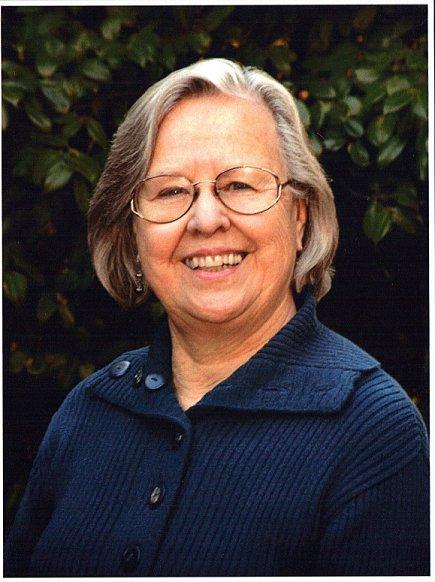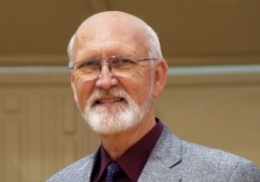From the hands of your earth and the lap of your sky,
your gifts are poured on us each day.
Your arms surround us with your care;
accept our love and thanks, we pray.
- Jean Janzen (Hymnal: A Worship Book, p. 97)
THE BIRTH OF A HYMN TEXT
by Jean Janzen
“From the hands of your earth” was written at the request of the Mennonite hymnal committee. I had earlier responded to their invitation to write texts based on the writings of three women mystics, a fresh opening of my soul to the language and thought of medieval times. Their need for a table blessing felt like a small assignment in comparison, and yet an opportunity to imagine something new to be sung in thanksgiving for the basic sustenance of food.
This was 1991, ten years after I had received my master’s degree in creative writing. Hymn texts were not a part of that preparation. Although my professors at Fresno State University were tolerant of my faith, they correctly taught me not to “preach” in my poems. Writing hymns texts was a test of the art, how to restate the language of faith with fresh and imaginative language? And now a table blessing. I sat down at my empty table and waited for a surprising image, not what is usually expected and has already been said or sung a thousand times. I remember coming up with the “hands of your earth and the lap of your sky” as an enlargement of the sense of God as our Provider, and maybe a kind of reversal. An echo, I thought, of the language of Native Americans as they also tried to name the sacred. Then I moved into more predictable rhythm and language for the rest of this small prayer of gratitude for food and protection.
When a text is offered to the composer, the writer gives the baby up for adoption. The birth is complete, but the care and feeding is now in the hands of another. Larry Warkentin composed a tune and rhythm which layers the simple words with a rich complexity, especially when it is sung in a round. And the gift of a round is that the ending is not defined, although the triple “Amen” in this one allows the singer to stop and eat. A small assignment, this blessing, and yet large.
THE BIRTH OF A HYMN TUNE
by Larry Warkentin
What does a father say when his child asks, “where do babies come from?” Depending on the age of the child and the imagination of the father the answers may range from “the stork brings them” to “they are a gift from God” or “you’ll learn about that in your high school sex education class.” Hymns are a little bit like that. Sometimes they are brought by the postal service and sometimes they are a gift from God—and there is a great deal that one must learn in a music theory class. In both situations some pleasure is involved, as well as some determined human effort.
Jean Janzen’s hymn text “From the hands of your earth” arrived by stork, or more accurately by postal service. The committee planning the 1995 Hymnal: A Worship Book submitted the text to several musicians hoping to find a tune that would support the text. Even though the poet and I were neighbors in central California the decision that we might work together on this hymn came from a thousand miles away.
Like a newborn infant, the text arrived naked. It was meant to be clothed in music.
I had set a number of Jean’s poems to music, but these were art songs meant for performance in recitals. This text was intended for different singers and a different audience.
For me, a strong text always has music hidden in it. I remember what Michelangelo said of his great sculptures, “The statue is already in the stone. My task is to find it.” Jean’s texts always have depth of meaning and a sense of music that make the composer’s task much easier.
So I studied the text to find the music. I could immediately sense that the words required music of depth and reflection. This is not a traditional hymn text. It is rich in symbolic images but does not follow a traditional metrical pattern. In the hymnal it would be labeled irregular. And it has only one verse. This meant that the music could focus on each word. There would be no additional verses with various emphases.
I knew that the hymn would be sung by congregants with limited musical training but who had a strong tradition of hymn singing. Since both men and women would be singing in unison the melody would need to stay within the range of eight to ten notes. I also knew that the style of congregational singing is in transition. Should I write music in four parts? Should I write music in unison with keyboard accompaniment? Should I write for voice and guitar and include rhythmic syncopation?
The text begins with trochaic rhythm and then shifts to iambic. It beings with grand images of earth and sky and ends as a prayer of thanks for daily provision and comfort. It never mentions God directly but God the Creator and Sustainer of all is implied in every phrase.
With these insights in mind I began to find the needed music. For me, a minor or modal key implies a sense of mystery and antiquity. Longer tones stir feelings of grandeur. Ascending lines provide emphasis. These thoughts provided the opening figures.
But how was I going to create the complexity and depth of thought that this seemingly simple poem had hiding in it? I couldn’t attempt a Handelian oratorio. Congregations don’t have time to rehearse such a composition even if I were capable of writing it. What about a round? A round is a unison melody that is usually easy to learn and it creates its own harmony. It can be sung with some percussion accompaniment like tambourines or hand drums but works just as well without accompaniment.
At this point I need to revive my beginning metaphor of “where do babies from?” Like the high school sex education class the birth of music also requires some instruction in music theory. In a music theory class a round is usually called a canon. In music, a canon is a tune that can makes acceptable harmony when followed by itself at prescribed intervals. The creation of a canon is a bit cerebral but the result can be easily enjoyed. This is what Jean Janzen’s poem required: the simplicity of a tune coupled with the complexity of a canon. Since it is a prayer I took the liberty of adding a three fold amen at the end. This was more than a reminder that this is a prayer. These concluding words help complete the musical canon without creating too many competing vowel sounds in the overlapping canonic voices.
I sent Jean’s baby off to college dressed in the garment of melody I had created and we were pleased to discover that the hymnal committee found it worthy of publication.

